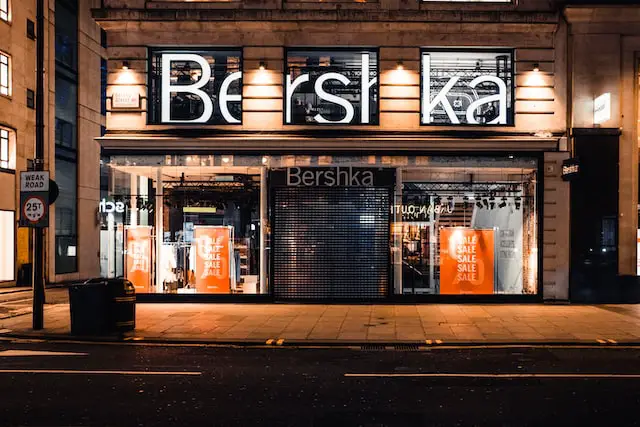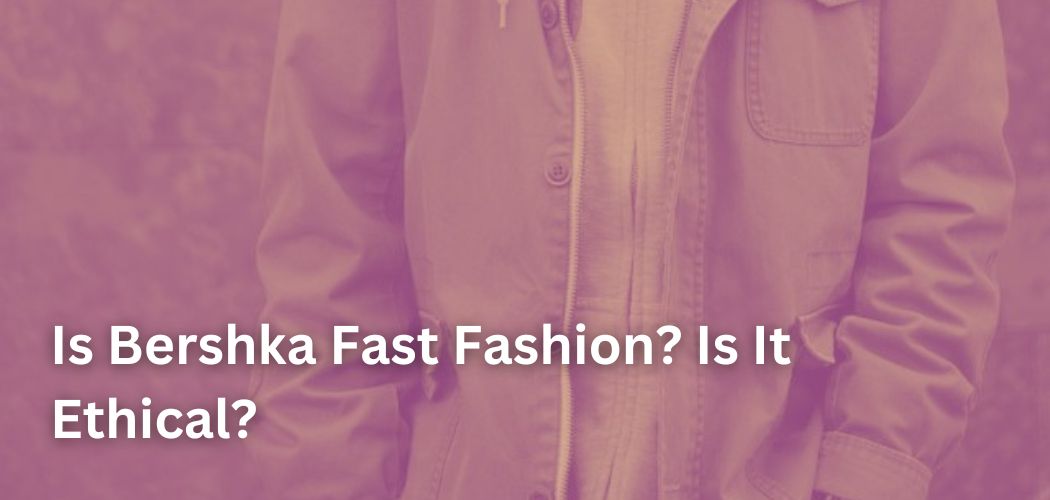The fashion industry is changing fast. Over the past couple of years, there have been a lot of new trends, new innovations, and new brands coming to the online arena.
This has been driven by increasing demand for fast fashion from the consumer.
But you know what else low prices and high demand from customers can do? They can damage the environment.
Fast fashion is a movement toward clothing that is designed to be altered, mass-produced, and sold at a relatively low price. Is Bershka Fast Fashion?
I’ll let you be the judge. Here are some of my thoughts on this question.
Does Bershka use fast fashion?
Bershka is fast fashion. It’s a company that provides affordable, on-trend clothing to millennials, founded in Spain in 1986.

It went from being a small business to offering its clothing online and through several brick-and-mortar locations worldwide.
Bershka’s strategy from its beginning has been based on affordable prices, a trend-focused design, and fast fashion.
The Inditex group owns Bershka, one of the founders of fast fashion. Their fast fashion-to-market service helped Inditex become the third-largest fashion company in the world.
Is Bershka a sustainable brand?
Every time you buy a fast fashion item, it’s not just the cost of the clothing that you have to consider — there are many other costs to take into account.
Approximately 37kg of clothes are discarded annually in America, 85% of which are thrown into landfills or burned.
Bershka is not the only brand that has been accused of unethical practices, but it is one of the biggest, with more than 2,500 stores worldwide.
This makes it a prime target for activists who want to highlight the problems with fast fashion.
Bershka’s affordable and cheap quality clothing comes at huge environmental and social costs. Clothing that does not last results in almost two-thirds of all clothing ending up in landfills.
The emissions generated by the endless loop of production and consumption are significant contributors to climate change.
These types of fast fashion brands are responsible for an estimated 10% of global carbon emissions and fast fashion has been described as ‘the new smoking’ by some experts because it encourages us to throw away clothes without thinking about their real value or how they were made.
In addition, an estimated 12 million tons of textile waste are dumped into landfills every year.
Bershka has not been fully transparent about its supply chain: while they claim their products are made in Spain, they have not disclosed which factories they use nor what their conditions are like.
And this is just part of the problem — they don’t publish any information about their supply chains or how much pollution is generated by their products so we don’t really know how big these numbers really are.
Where is Bershka made?
Spain, a country that is medium-risk for labor abuses, is where half the final production stage is completed.
Bershka’s unethical business practices are not only harming our environment but also the people who work in their factories.

The Spanish clothing retailer has been accused of using child labor in its supply chain, failing to pay its workers a living wage, and using unsafe working conditions that led to the death of several employees.
Why is Bershka unethical?
Bershka is a Spanish fashion brand owned by Inditex, the same company that owns Zara and other popular brands.
Bershka has been in the fashion industry since the 1980s and now has over 1,000 stores all around the world. The brand strives to offer affordable clothing for all ages, genders, sizes, and styles.
But is it ethical? Here’s what I found out:
The first thing I checked was whether Bershka uses eco-friendly materials.
Although there are some good steps being taken towards sustainability and minimal textile waste, there isn’t enough evidence that it minimizes textile waste significantly.
According to Good On You, there is no published data on how much waste is generated from each garment sold, or how many garments are recycled into new products.
The Fashion Transparency Index gave Bershka a score of 51-60% in 2019.
We also found no evidence that they are doing much to incorporate eco-friendly and innovative materials into their designs. For example, they haven’t released any information about whether they use recycled water bottles or sustainable fabrics such as hemp or linen.
Is Bershka good for the environment?
The fashion industry is the second-largest polluter in the world, and it’s getting worse.
The textile industry has an insatiable appetite for natural resources and energy to produce clothes, which contributes to global warming and pollution.
Bershka has been criticized by Greenpeace for failing to disclose its climate impact on its website or social media pages. In 2018, Greenpeace rated the company a “0/10” for transparency on climate change.
The company has also faced criticism over its lack of sustainable fashion credentials.

It has no evidence it minimizes textile waste by using recycled fabrics or recycled packaging across its range.
In 2017, Greenpeace found that the brand was using virgin polyester in some of its garments – one of the most polluting materials in clothing production.
In addition, Bershka fails to mention how much-recycled polyester is used in its products.
Conclusion:
According to their website, it is true that Bershka produces its own collections. This is typical of many fast-fashion retailers.
Only a third of their clothes are manufactured by external suppliers, but what is crucial to understand is that the labels are manufacturing their own clothes in order to maintain low prices for the customer.
So if you are looking for ecological garments made with traditional materials, this brand might not be for you.

